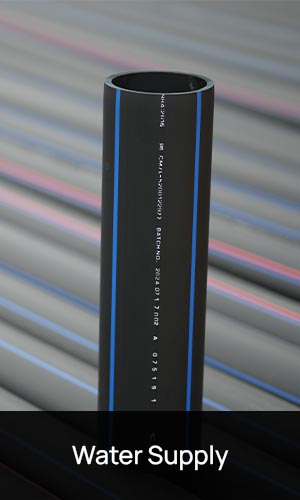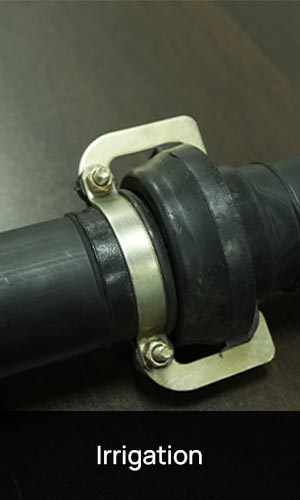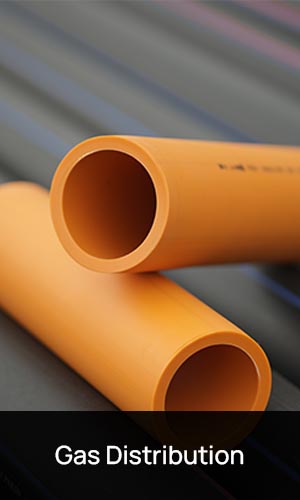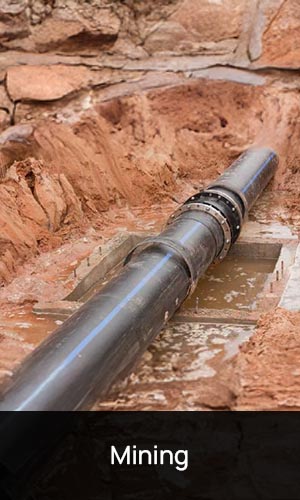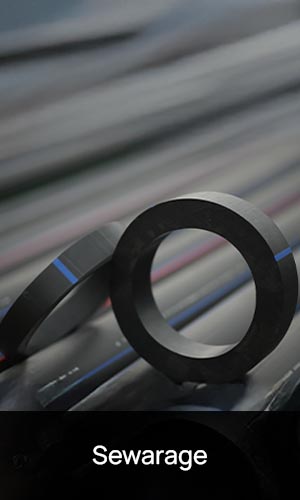RAREAN Fluid-Tech takes pride in the fact that our products help protect the earth, ensure safety, and conserve our most valuable resources. HDPE is known to have the lowest life cycle cost of any piping material.
Pipe production – The carbon footprint of HDPE pipes is significantly less than that of traditional materials such as iron and concrete. These observations were concluded based on full life cycle consumption, including extraction, pipe manufacturing, logistics, installation, service life, and final disposition of waste. Since HDPE pipes have a life cycle of approx. 100 years in many applications. This is Twice of most traditional pipe materials, thereby making it even more earth-friendly. At RAREAN Fluid-Tech, all raw virgin pipe-grade raw materials are used or reworked with no waste or byproduct. Our plant is designed to recycle process water and maximize energy-efficient use of our equipment and facilities.
Our Products
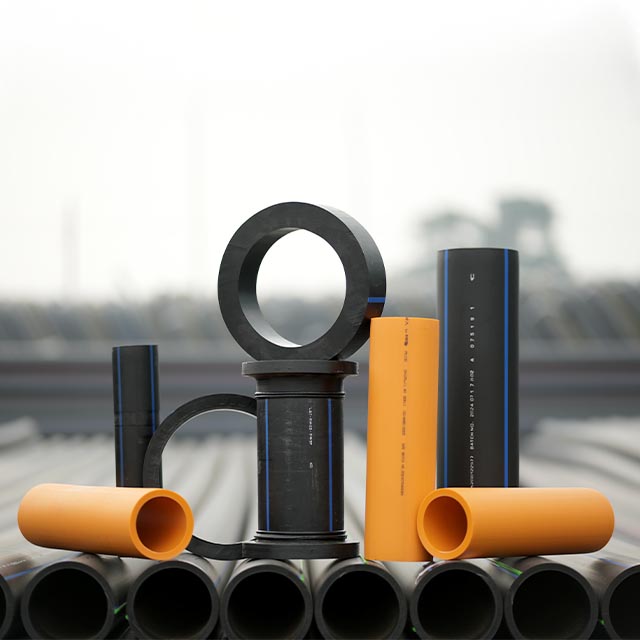
HDPE Pipe is the only major piping system today that is joined by heat fusion. Hence, the HDPE pipelines are without any joints, grouting, or gaskets, resulting in a 100% leak-free pipe. Preventing leaks in water systems conserves our water resources and reduces pumping costs, the most significant energy cost of water systems. HDPE pipe is the ideal solution for both open-cut installation as well as trenchless installation methods. Trenchless installation is yet another way of significantly reducing the carbon footprint of pipeline rehabilitation and replacement as well as protecting existing trees and property. These advantages extend to the transport of oil and gas, chemicals, and mining slurries.
APPLICATIONS
PE Pipe for water application
Polyethylene (PE) pipe is manufactured through the polymerization of ethylene and is produced using an extrusion process, allowing for the efficient creation of pipes in various sizes.
Polyethylene is a popular thermoplastic piping material used in water distribution networks, sewage management, irrigation systems, sand stowing, dust separation, dewatering, slurry disposal, and electrical conduits.
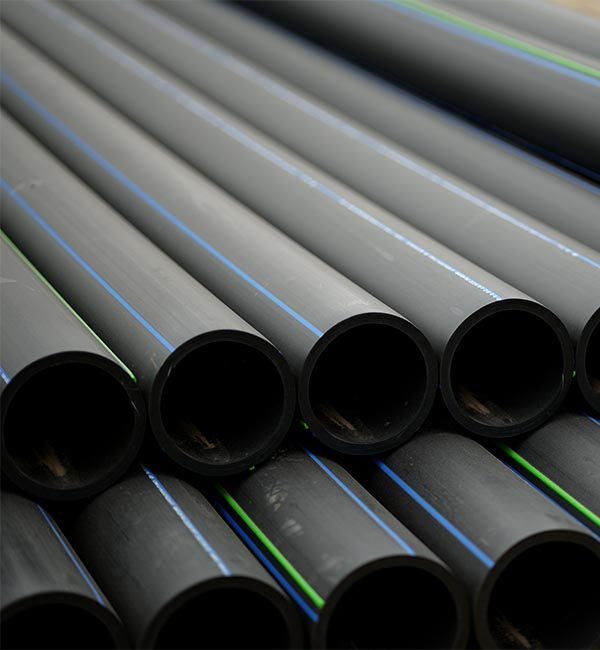
Technical information -
-
Size - 16mm - 500mm (1/2" - 20")
-
Grade - PE 100(PE 4710), PE 80 (PE 3408), PE 63 (PE 2306)
-
SDR Rating - PN 2.5 - PN 25
-
Colour - Black, Blue
Specifications

PE Pipe for sprinkler irrigation
Sprinkler irrigation is a method of applying water that mimics natural rainfall. Water is distributed uniformly through a network of pipes, typically using a pump, and is then sprayed into the air through sprinklers, where it is broken into fine droplets that fall to the ground. It is essential that the pump supply system, sprinklers, and operational conditions are designed to ensure uniform water distribution.
- Crops – Sprinkler irrigation is effective for most crops; however, it may not be suitable for more delicate crops, such as lettuce, which can be adversely affected by the impact of larger water droplets.
- Slopes – Sprinkler irrigation is versatile and can be implemented on various farmable slopes; however, positioning lateral pipes along the land contour is recommended to achieve uniform irrigation.
- Irrigation water – To prevent sprinkler nozzle blockage and mitigate crop spoilage caused by sediment accumulation, it is essential to maintain a clean, unobstructed water supply.
- Soils – Sprinkler irrigation suits most field crops, including tea and coffee gardens. The application rate of the sprinkler irrigation system should be less than the estimated infiltration rate of the soil to avoid runoff.
Sprinklers are not suitable for soils which easily form a crust. If sprinkler irrigation is the only method available, light fine sprays should be used. The larger sprinklers producing larger water droplets are to be avoided.
Specifications
Technical information -
-
Size - 40mm - 140mm (1 1/2" - 5")
-
Type - Class 1-4
-
Colour - Black
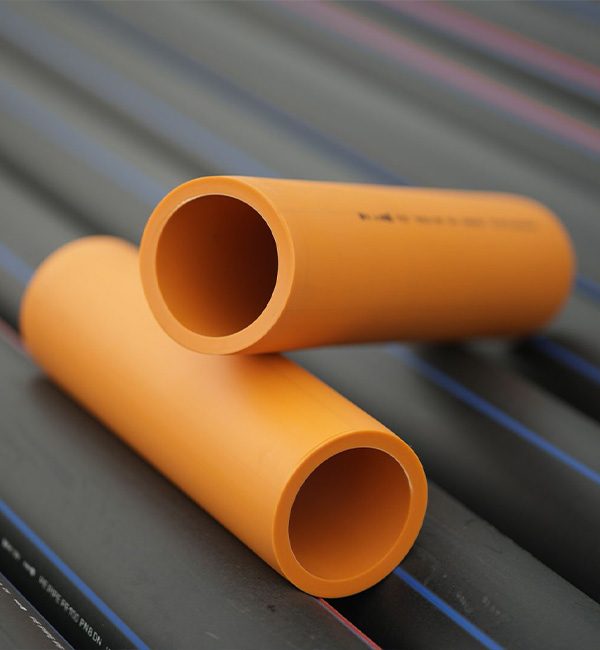
PE Pipe for the conveyance of gas
With its inherent qualities for gas distribution networks and appropriate electrofusion fittings, polythelene is a thermoplastic piping material that is widely accepted worldwide. PE (polyethylene) pipes (grades PE 80 and PE 100) are ideal for natural gas, propane, coal bed methane gas, biogas, land field and leachate gas and vaporised LPG because they are lightweight, highly corrosion resistant, long-length, fusion compatible and fast to install.
The Petroleum & Natural Gas Regulatory Board (PNGRB) has established rules for pipe gas distribution systems in India. CGD businesses adhere to these guidelines, which state that PE pipes offer the safest and most economical alternative for the distribution of fuel gas.
Specifications
Technical information -
-
Size - 20mm - 315mm (1/2" - 12”)
-
Grade - PE100 (PE 4710), PE80 (PE 3408)
-
SDR Rating - D7 - D17
-
Colour - Orange, Yellow, Black
PE Pipe for drainage
HDPE Pipes are the best cost-effective replacement for open canal irrigation and an ideal solution for stormwater drainage and disposal of effluent
- Smooth Internal surface
- No evaporation loss of irrigation water during flow inside the pipe
- Cost-effective installation
- Pipes are available in low-pressure rating to high-pressure rating areas like PN 2.5 to PN 20
- Good dielectric properties to take care of the other electrical energy utilities hindrances if any occur during natural calamities
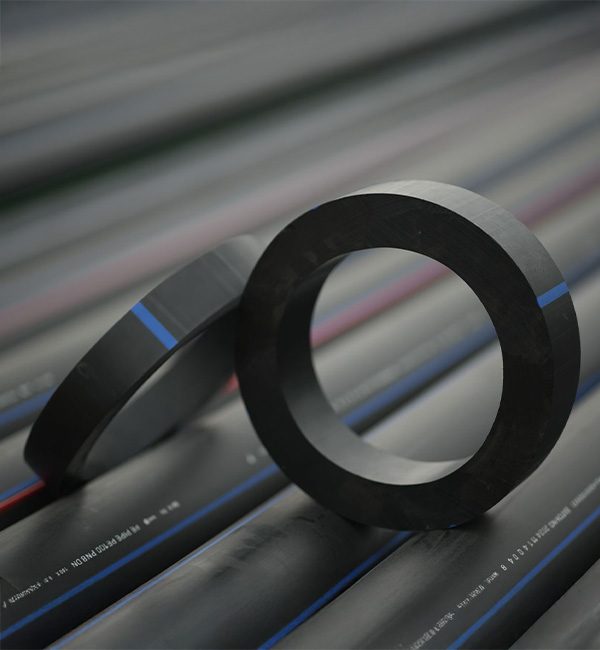
Technical information -
-
Size - 3mm - 500mm (2" - 20")
-
Pressure class - PN 2.5 - PN 10
-
Colour - Black with brown strips
-
Grade - PE 80, PE 100

